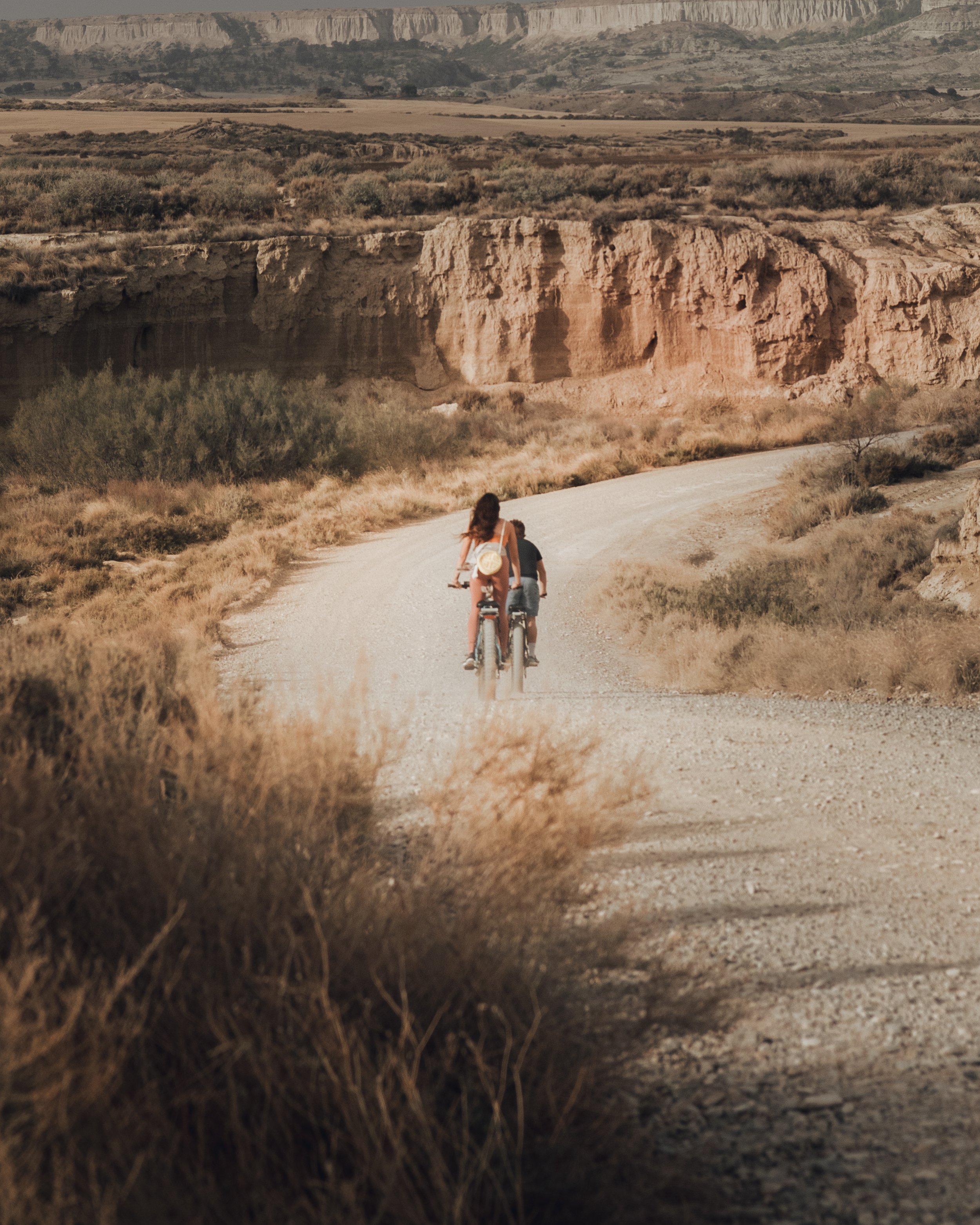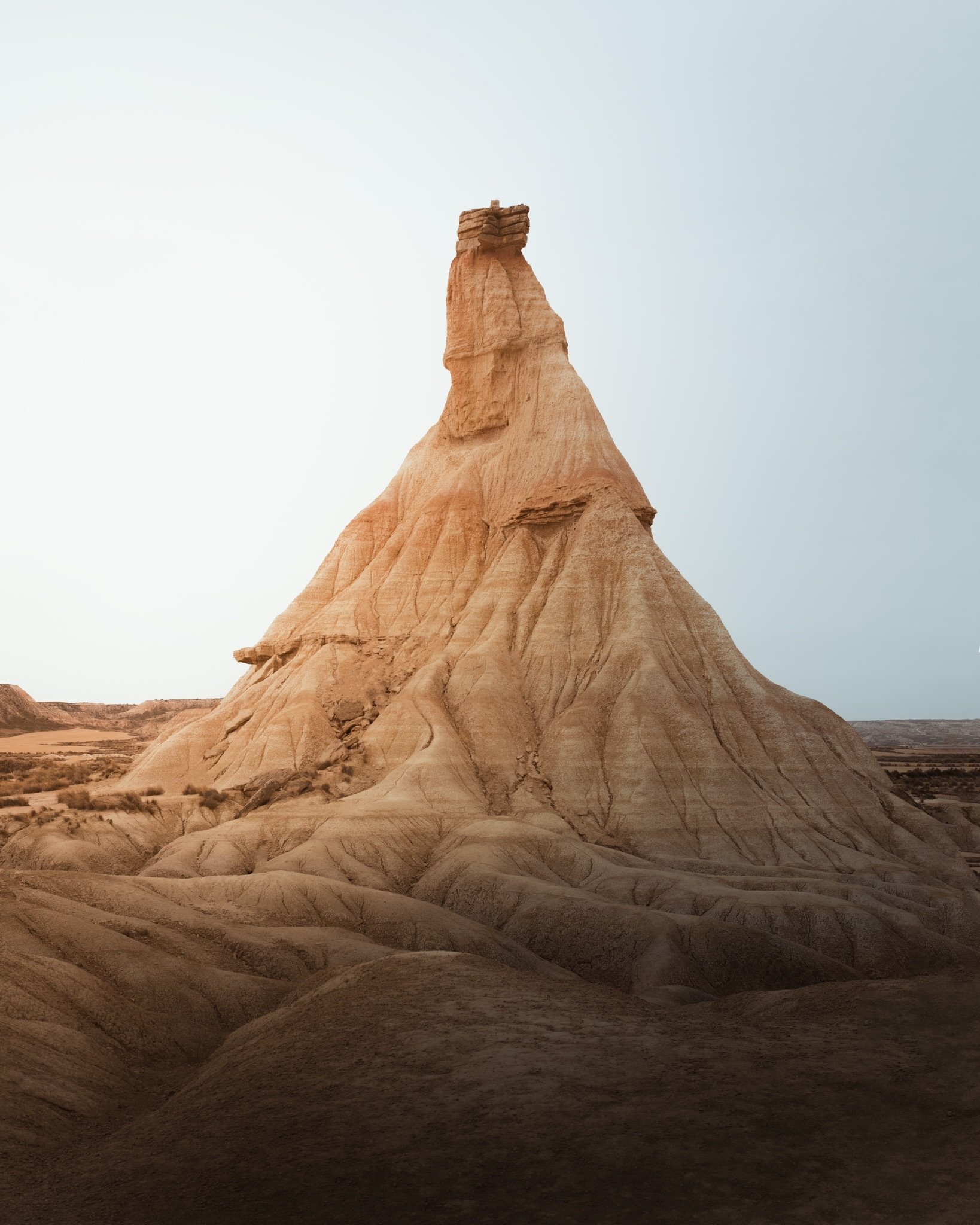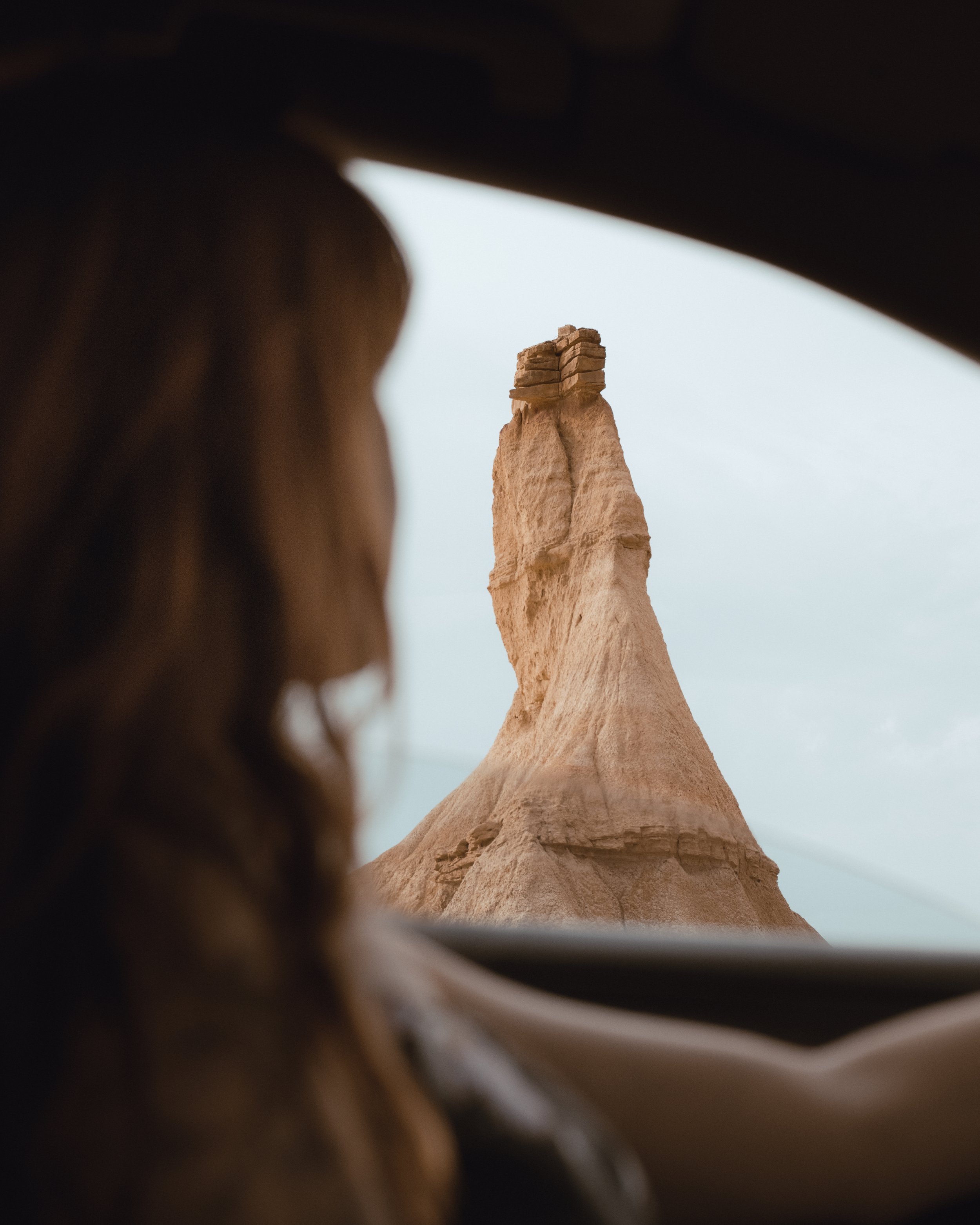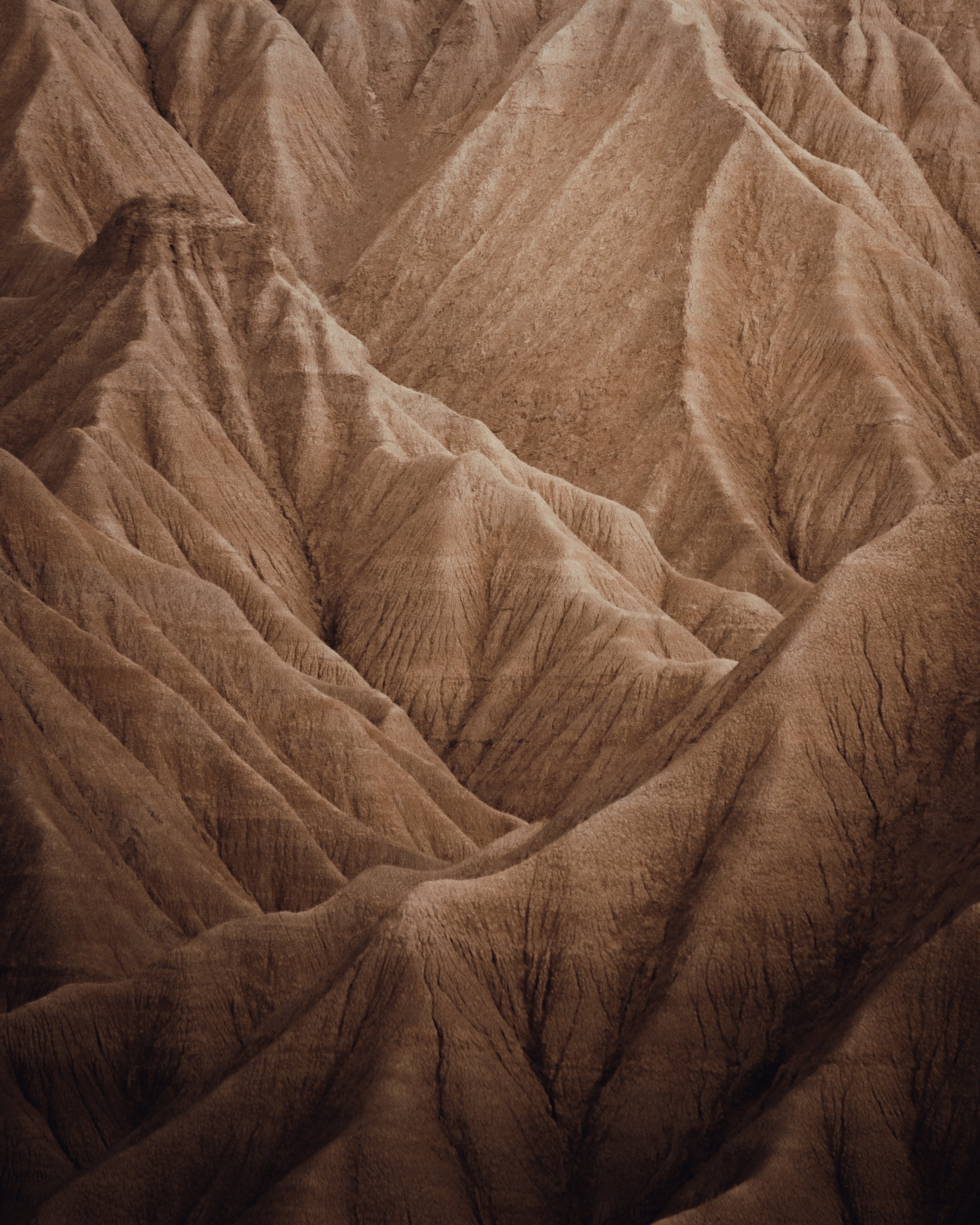BARDENAS REALES DE NAVARRA (I): THE BIGGEST DESERT IN EUROPE
I had been wanting to visit this area for some time and it was last October when I had the opportunity to make an express getaway with my colleague and friend Jessica Rojas, astrophotographer and filmmaker.
When I proposed it to her, it was an immediate yes, she had also been wanting to visit it for a long time and, here in Spain, we have many gems of nature to explore.
The Bardenas Reales de Navarra is a Natural Park declared a Biosphere Reserve by UNESCO. Did you know that it is also the largest desert in Europe? It has 42,500 hectares of arid landscapes where there is very little rain (and when there is rain it is usually torrential!) and you will always be accompanied by wind. Both agents together are the ones that have been responsible for shaping the peculiar landscape full of textures that we find there.
We travelled this time in a camper van, the accesses are good and the main road of the park is asphalted, although to access the points of interest you will have to go on dirt roads. There are routes that can be done in motor vehicles (caravan, car or motorbike), by bicycle or on foot. The complete circular route to the park in a motor vehicle lasts approximately 2:30 hours, including some stops at the viewpoints.
Mara working from the van with views to Castildeterra
Some people enjoying the visit in mountain bikes
Entering through Tudela and Arguedas, the main entrance to the Park, we found the information point where we stopped and were given a map showing the places of interest and where we were informed of opening hours (from 8am until one hour before sunset - 6:15pm on this occasion), direction of travel and restricted routes at that time.
Our first stop was, of course, Castildeterra. The famous eroded "monolith" with fairy chimney. There we spent most of the afternoon visiting the area and touring it from all perspectives. Right next to Castildeterra there is a canyon that surrounds it on one side and can be visited on foot. As time was running out and it was almost dusk, we couldn't do it, but we'll make a note of it for the next visit!
Jess observing the top of Castildeterra from the van
We spent the night in Arguedas, they have two overnight areas in the village which were great. With water drainage for motorhomes and marked parking spaces. In the village the people were very friendly and we found all the services: bars, petrol station, pharma, bank...
The next morning the first thing we did was to refuel at the petrol station on the outskirts of the village, a few metres from the turn-off to the Park. It is important to take a full tank of petrol and water for hydration as you will not find any of these services inside the Park.
The second day started with trying to get some astrophotography at sunrise, but we had no luck as the sky was completely overcast and we couldn't see the sun all day. These things happen all too often
The weather was something that really caught our attention, it changed so fast! During the 24 hours we were there we had some sunshine, dense clouds, clouds giving way to some sunshine, skies with some clearings, moderate to very windy and rain (it left us with a lot of dirt in the vehicle). The whole pack! Because of these sudden weather changes, I would recommend taking several layers to keep warm when necessary as well as a waterproof windbreaker with a hood, which is great and is something I always carry with me when I go out to photograph.
We set off for Piskerra, to explore the area. There are two starting points for this route, the car park next to Carcastillo or the car park signposted as "Refugio" on the previous Carcastillo turnoff. The route in Piskerra is circular so you will cover both areas wherever you start. This is the map we consulted to help us find our way around the area:
Source: Tourism of Navarra website
BEWARE, the badenas are all very similar so it is quite easy to get lost as there are no signposts along the route on foot. We kept the location of the vehicle so that we could always return to it without any problem and, once on the route, we set one of the quite characteristic mountains as a reference point.
Once there, you will find a hut with a shelter where you can take refuge and rest on some of the chairs that were there. There is also a high hut that can be seen, although the ascent is somewhat complicated and it is not in good condition. The rest is to lose yourself in the textures, admire the scenery and enjoy a hiking route in the middle of the desert.
Piskerra patterns & textures
Piskerra patterns & textures
What did we like the most? Without a doubt, the Piskerra area. The Castildeterra fairy chimney is spectacular and the most famous visual attraction in the park, yes. But as a lesser-known gem full of textures, Piskerra gets an honourable mention. It is an area that you can visit with walking routes, some of them quite steep but where you will see the Bardenas up close, its crevices and textures leaving you speechless. It is a very extensive area of the park and somewhat remote (about 38 minutes by car from Castildeterra), so to explore it fully you need to dedicate at least a full day.
Like any place you visit, not everything is to your liking and I want to be totally transparent so that you know what you may (or may not!) find during your visit.
Let's get down to it, what didn't I like about the place? Well, the truth is that in the Park you can find a hunting reserve as well as a military base, properly delimited and signposted, where access is not allowed.
Regarding the hunting ground, we did not coincide with any hunting activity, but we did find out if there would be any hunting activity during our visit, as they usually restrict access, for a few hours, to certain routes when they have a hunting event.
As for the military base, on the way back from the second 7 km trek, we were accompanied by two military fighters manoeuvring in the sky and emitting a deafening noise. It was certainly curious to see these planes, it was the first time I had seen a fighter doing manoeuvres relatively close and I have to say that it was quite impressive. Still, it was a sight I would have preferred not to have been there as it somehow interrupted the experience of being in the desert just listening to the wind, our footsteps walking on the arid ground and the fluttering of some birds flying.
Despite these two somewhat bittersweet details, the experience of the visit was very good, There are many more areas to visit in the park, we have them all to do, and on our next trip I will be able to tell you about our experience in the rest of the park and all the new places we discovered.and we are already planning our second trip, this time not so express, so that we can continue exploring the area and discover new places that will leave us speechless!
AUTOR:
MARA DE LA TORRE
Professional travel photographer and content creator. Specialised in storytelling for brands.
Lover of nature and capturing it through the lens.











